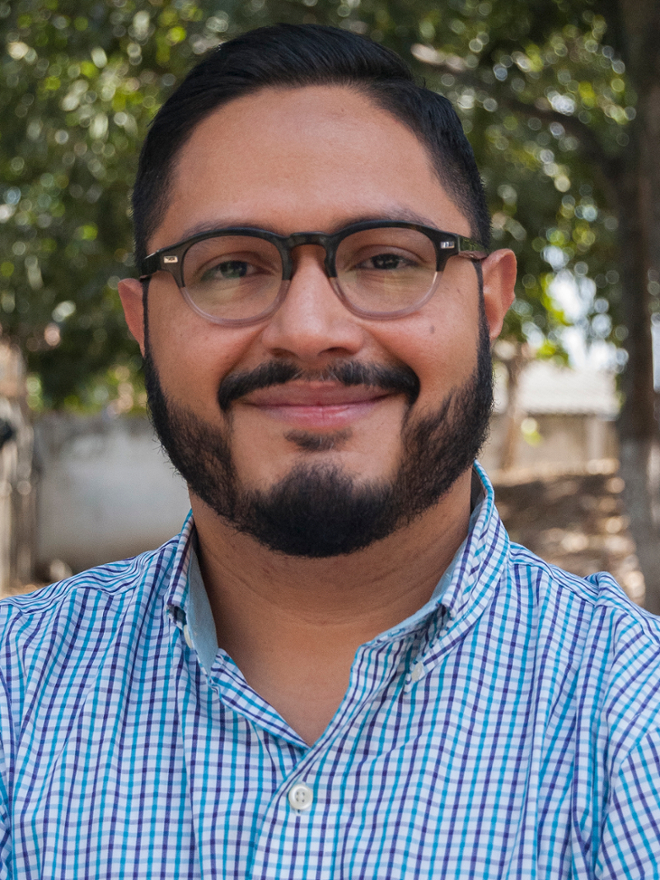By Karen Shih

Growing up in El Salvador, gang violence dominated headlines and conversations. “Everyone knew a case where a family member or coworker had been extorted or robbed,” says Rodrigo Moran, MA SID’16. “In some neighborhoods, just getting to school or home safely is a big deal.”
But Moran believes it doesn’t have to be this way. He’s taking what he learned about sustainable international development and conflict resolution at Heller back to his home country to create change for a new generation.
“I have witnessed youth being incredibly resilient and creative when given the proper tools,” says Moran, who has used technology to give young people safe outlets for expression throughout his career. “I want violence prevention solutions to come from communities and not from an office in Washington, D.C.”
Now, he’s working for Creative Associates International, a USAID implementer in designing a new open innovations model which he calls “Creablocs.” These blocks are modular learning units, which will be co-designed by experts in topics such as digital fabrication, multimedia and video games, alongside communities and users. To illustrate the potential of technology for development and CreaBlocs, he highlights an example in which techniques such as participatory digital fabrication can serve as a tool for designers or makers to work with elders, youth and community leaders to design and 3-D print urban furniture to reclaim their public spaces. With other Creablocs, users can learn potential job skills, like how to design—not just play—video games, as well as how to use video and audio recording equipment to tell stories important to them.
He points to a group of students who created an Internet of things device to automatically send a text message to parents when students arrived at and left school, based on a sensor in their IDs, as the type of hyper-local innovation he hopes to see across the country.
“I’m definitely a tech geek—video games are actually what helped me learn English,” says Moran. He credits Heller with bridging the gap between his passion for technology and youth development, especially a seminar with Professor Francisco Belda. “It really opened my mind to the use of appropriate technologies for community development.”
He first heard about Heller during a college exchange program that sent him to Nazareth College in Rochester, New York, where an SID alumnus spoke about his work.
“I was blown away. How is this a field? I spent the next five years figuring out how I could get to Heller,” he says. He wanted to learn how to better channel his passion for social justice, which started when he joined a movement called “Youth Against Violence” in college to push for better public policies in El Salvador.
When he arrived at Heller in 2014, the school “exceeded my expectations, which were high,” he says. “It was exactly the type of program I wanted, to understand all dimensions of international development. I met some of the most fantastic individuals—I pretty much have a friend or colleague in almost 100 countries now.”
“I still reach out to many of my classmates for advice. What Heller does is generate the spaces for conversation,” says Moran. For example, he developed a video game-based intervention for at-risk youth with MBA and MPP students during his time at Heller. “Even though we didn’t succeed in getting funding for that project, it’s what inspired my current work. I’ve brought that whole model and adapted it to the Salvadorean reality.”
